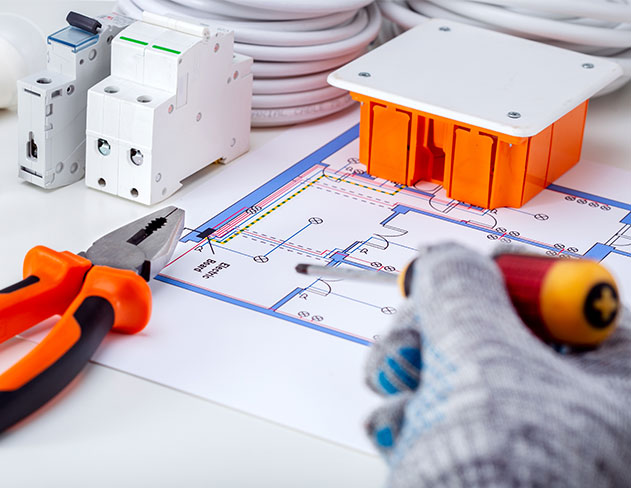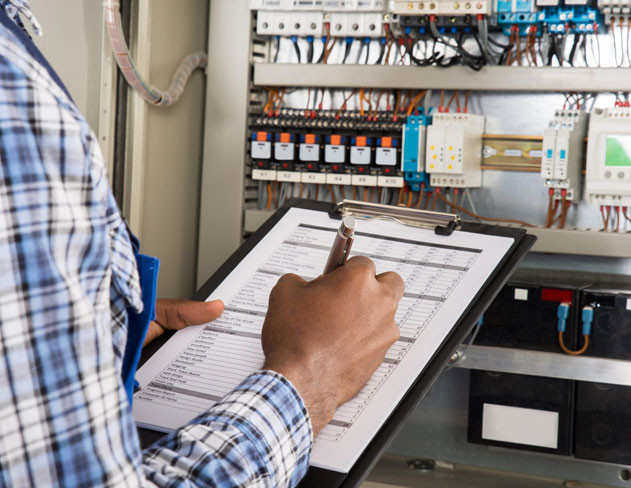Electrical Installation Condition Reports (EICR) – The Comprehensive Guide
Ensuring the safety and satisfactory condition of electrical installations is a crucial aspect of property maintenance. So, here is your essential Electrical Installation Condition Reports Guide (EICR) – EICR Guide. Whether it’s a home or a commercial building, Electrical Installation Condition Reports (EICRs) provide an in-depth evaluation of an installation’s condition, pinpointing any potential safety risks or areas of non-compliance.
EICRs are available in two forms: Visual Inspection Reports and Electrical Installation Condition Reports. Both types aim to ensure safety, but they differ in their approach and depth of inspection.
Visual Inspection Reports offer a basic review of the installation, identifying any visible signs of damage or wear. In contrast, Electrical Installation Condition Reports delve deeper, involving comprehensive testing and inspection of the electrical systems.
For a more detailed comparison of these two types of reports, take a look at our guide on commercial EICR requirements.
How Can I Determine the Age of My Electrical Installation?
Identifying the age of an electrical installation can be a bit challenging, but there are several tell-tale signs to look out for. These include:
- The presence of black rubber coated cables
- Lead or fabric coated cables
- Fuse boxes with wooden backs
- Cast iron switches
- Older round pin sockets
These features often indicate older installations that may require an EICR. It’s advisable to have a qualified electrician inspect your electrical installation every 5 years, or when moving into a new property.
This ensures that any potential issues are identified and addressed promptly, maintaining the safety and efficiency of your electrical systems. For more details on the lifespan of an EICR, visit our page on how long an EICR lasts.
What is the Purpose of an Electrical Installation Condition Report (EICR)?
The primary goal of an EICR is to ensure the safety and compliance of an electrical installation. This is achieved through a detailed inspection and testing process, which identifies any damage, wear and tear, hazards, or areas of non-compliance. The results are then compiled into a comprehensive report, providing a clear overview of the installation’s condition.
The EICR serves as a valuable record of the installation’s condition, which can be useful for property owners, landlords, and electrical professionals. It provides a benchmark for future inspections, helping to track the installation’s condition over time.
Exploring the Types of Electrical Installation Condition Reports (EICR)
EICRs come in two main forms: Visual Inspection Reports and Electrical Installation Condition Reports. Both types aim to ensure the safety and compliance of an electrical installation, but they differ in their depth of inspection and the level of detail provided in the report.
- Visual Inspection Reports offer a more basic review, focusing on the visible aspects of the installation. They identify any obvious signs of damage, wear and tear, or potential hazards. These reports are typically quicker to complete, but they do not provide as much detail as an Electrical Installation Condition Report.
- Electrical Installation Condition Reports, on the other hand, offer a more comprehensive assessment. They involve a thorough inspection and testing of the electrical systems, identifying any hidden issues that may not be immediately visible. These reports provide a detailed overview of the installation’s condition, including any areas of non-compliance or potential safety concerns.
The type of report required will depend on various factors, such as the age and condition of the installation, the type of property, and any specific legal requirements. For more information on who can carry out an EICR, visit our page on how to find an EICR provider.
What Insights Can You Gain from an EICR Report?
An EICR report offers a wealth of information about the condition of an electrical installation. It uses specific codes to indicate the severity of any identified issues:
- Code C1: Danger present, risk of injury. Immediate remedial action required.
- Code C2: Potentially dangerous. Urgent remedial action required.
- Code C3: Improvement recommended. Further remedial action advised.
- Code FI: Further Investigation required. A fault is there but needs further analysis.
The report also includes a detailed record of the inspection and testing results, any identified damage or wear and tear, potential hazards, and areas of non-compliance.
This information is invaluable for maintaining the safety and compliance of your electrical systems. For more information on understanding your EICR report, visit our page on EICR for domestic properties.
Who is Qualified to Conduct an EICR?
Only competent and qualified electrical engineers or registered electricians should carry out an EICR. These professionals have the necessary training and experience to accurately assess the condition of an electrical installation and identify any potential issues.
Choosing a qualified professional to conduct your EICR ensures that the report is accurate and reliable, providing you with the information you need to maintain the safety and compliance of your electrical systems.
For more information on who is responsible for an EICR on commercial properties, visit our page on commercial property EICR responsibilities.
The Process of Conducting an EICR – EICR Guide
The process of conducting an EICR involves several key steps:
- Initial Inspection: The electrician begins by visually inspecting the electrical installation. This involves checking for any obvious signs of damage, wear and tear, or potential hazards.
- Testing: The electrician then conducts a series of tests to assess the functionality and safety of the electrical systems. This includes checking the effectiveness of the earthing and earth-bonding, testing the insulation resistance, and verifying the correct operation of the residual current devices (RCDs).
- Reporting: The results of the inspection and testing are compiled into a detailed EICR report. This report includes a description of the installation, the results of the inspection and testing, and any identified issues or areas of non-compliance.
- Remedial Action: If any issues are identified during the EICR, the electrician will recommend appropriate remedial action. This could involve repairing or replacing damaged components, improving the earthing or bonding, or upgrading the electrical systems to meet current safety standards.
For more information on the process of conducting an EICR, visit our page on commercial electrical testing.
Understanding EICR Codes and Their Significance
Understanding the codes used in an EICR report is crucial for interpreting the condition of your electrical installation. Here’s what each code means:
- Code C1: Danger present, risk of injury. Immediate remedial action required. This is the most serious code, indicating a direct and immediate threat to safety.
- Code C2: Potentially dangerous. Urgent remedial action required. While not immediately dangerous, these issues could become a serious safety risk if not addressed promptly.
- Code C3: Improvement recommended. Further remedial action advised. These are less serious issues, but addressing them can improve the overall safety and efficiency of your electrical installation.
- Code FI: Further Investigation is required into a fault that has been identified. More detailed investigation over a longer period of time is needed to find the route cause of the issue and determine corrective action. FI faults carry the same weight as C2 faults.
For more information on understanding your EICR report, visit our page on EICR for domestic properties.
The Significance of Regular EICR Checks
Regular EICR checks are essential for maintaining the safety and compliance of your electrical installation. These checks identify any potential issues early, allowing for prompt remedial action and preventing further damage or deterioration.
Neglecting regular EICR checks can lead to serious safety risks, including electrical fires or electric shocks.
Regular checks also ensure that your installation remains compliant with current safety standards, helping to avoid potential legal issues or penalties. For more information on the importance of regular EICR checks, visit our page on EICR rules for landlords.
EICR for Landlords
For landlords, conducting regular EICR checks is not just a safety measure – it’s a legal requirement. These checks ensure that the electrical installations in rented properties are safe and compliant, protecting tenants from potential electrical hazards.
Landlords are responsible for arranging regular EICR checks and addressing any identified issues. Failure to do so can result in severe legal penalties, including fines or imprisonment. For more information on EICR requirements for landlords, visit our page on EICR rules for landlords.
EICR for Commercial Properties
Commercial property owners also have a legal obligation to ensure the safety and compliance of their electrical installations. Regular EICR checks are crucial for identifying and addressing any potential issues, protecting employees and visitors from electrical hazards.
Commercial property owners are responsible for arranging regular EICR checks and taking prompt remedial action to address any identified issues.
Non-compliance can again lead to serious legal consequences, including hefty fines. For more information on EICR requirements for commercial properties, visit our page on commercial electrical testing.
Conclusion- EICR Guide
Electrical Installation Condition Reports (EICR) play a vital role in maintaining the safety and compliance of electrical installations.
Whether you’re a homeowner, landlord, or commercial property owner, regular EICR checks can help you identify and address potential issues, ensuring the ongoing safety and efficiency of your electrical systems.
Remember, EICR checks should always be conducted by a competent and qualified electrical engineer or registered electrician.

